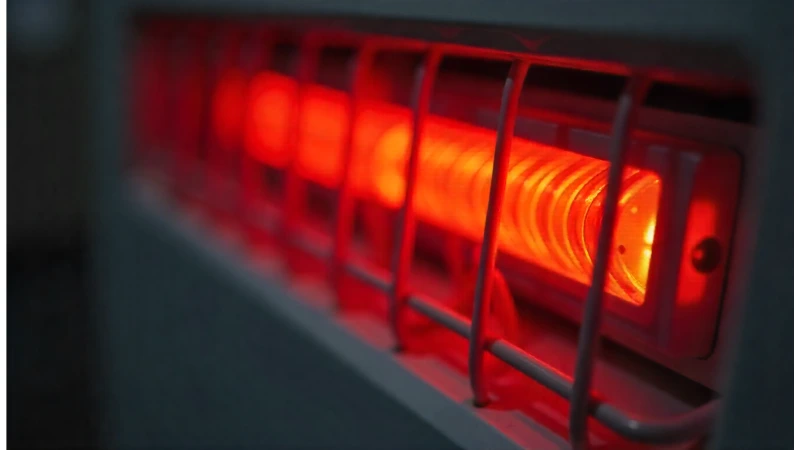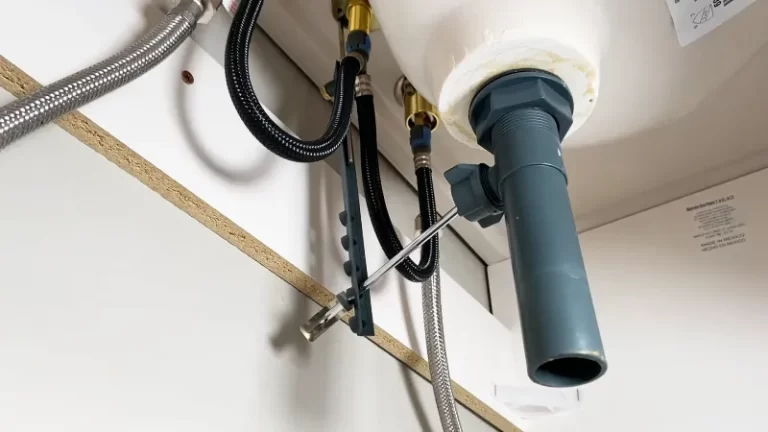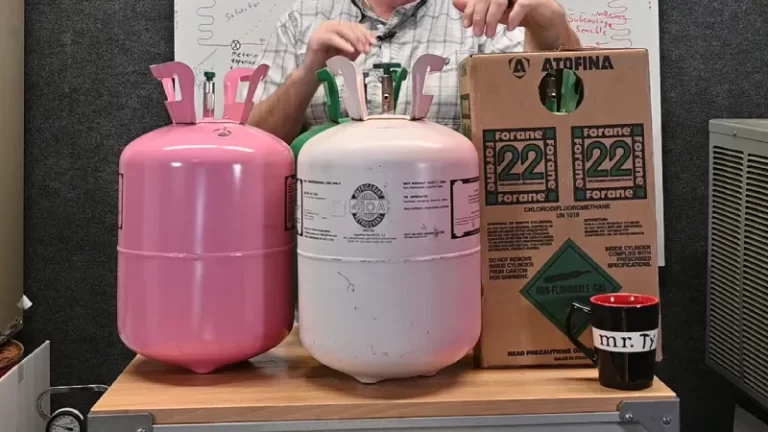Electric Wall Heater Glowing Red? Here’s the Terrifying Truth
You walk into a room and notice a faint, orange-red glow. At first, you might dismiss it. But then you realize it’s coming from your electric wall heater. An electric wall heater glowing red is an unnerving sight and a clear signal that something is wrong. This isn’t just a cosmetic issue; it’s a potential fire hazard that demands your immediate attention.
Many homeowners understandably panic in this situation. Is the unit about to burst into flames? Should you evacuate? This comprehensive guide will address your concerns, explore the causes behind this alarming phenomenon, and provide clear, actionable steps to safely resolve the issue and ensure your home remains warm and secure.
You'll Learn About
Why Is My Electric Wall Heater Glowing Red? Uncovering the Causes
Understanding the root cause of the glowing is the first step toward a solution. Several factors can cause the heating elements in your electric wall heater to overheat and glow a dangerous red. Ignoring these signs can lead to catastrophic failure or even a fire. Let’s break down the most common culprits.
1. Severe Dust and Debris Buildup
This is by far the most frequent reason for an electric heater to glow. Over time, dust, pet hair, lint, and other airborne particles get drawn into the heater. These particles settle on the heating elements. When you turn the heater on, this accumulated debris essentially gets “cooked.”
At first, you might notice a burning smell. If the buildup is significant, it can insulate the heating elements, causing them to overheat to the point of glowing. This is a serious fire risk. The glowing debris itself can ignite, or the excessive heat can damage internal components.
2. Obstructed Airflow
Electric wall heaters, whether they are convection or fan-forced models, rely on proper airflow to distribute heat and keep their internal components at a safe operating temperature. When this airflow is blocked, heat gets trapped inside the unit.
Common obstructions include furniture pushed up against the heater, curtains draping over it, or even clothes left to dry too close to the unit. This blockage prevents the heater from dissipating heat effectively, leading to overheating and the tell-tale red glow of the elements.

3. Malfunctioning Thermostat or High-Limit Switch
Your heater has built-in safety features. The thermostat regulates the temperature, cycling the heater on and off to maintain your desired setting. The high-limit switch is a critical safety device that shuts the heater off if it gets dangerously hot.
If either of these components fails, the heater can run continuously and uncontrollably. The heating elements will just keep getting hotter and hotter, far exceeding their designed temperature limit. This uncontrolled heating process is what causes them to glow brightly and poses an immediate danger.
4. Internal Component Failure or Wiring Issues
Less common, but still possible, are internal electrical problems. A loose wire, a failing connection, or a short circuit can lead to electrical arcing and excessive heat in a specific spot. Much like issues you might find with water heater conduit wiring, faulty electricals are a significant hazard.
This localized overheating can cause a portion of the heating element or an internal wire to glow. These electrical faults are particularly dangerous as they can quickly lead to an electrical fire.
Immediate Steps to Take When Your Heater Glows Red
If you see your electric wall heater glowing red, do not hesitate. Your immediate actions are crucial for safety. Follow these steps precisely.
- Turn Off the Heater Immediately: Go to the unit and turn it off directly using its control knob or power switch.
- Cut Power at the Breaker: Go to your home’s main electrical panel and flip the circuit breaker that controls the heater to the “OFF” position. This ensures no electricity is flowing to the unit, making it safe to handle.
- Do Not Use It Again: Do not be tempted to turn the heater back on to “see if it’s fixed.” The underlying problem still exists.
- Let It Cool Down: Allow the heater to cool down completely for at least an hour before you attempt to inspect or clean it.
Following these initial safety steps prevents the immediate danger from escalating. Now, you can move on to diagnosing and fixing the problem.
How to Safely Fix a Glowing Electric Wall Heater: A Step-by-Step Guide
Once you’ve secured the power and the unit is cool, you can begin the troubleshooting process. For many, a thorough cleaning is all that’s needed. For others, a professional’s help will be required.
Step 1: The Deep Clean
As dust is the primary suspect, a meticulous cleaning is your first line of defense. You will need a vacuum cleaner with a brush attachment and a can of compressed air.
First, use the vacuum’s brush attachment to carefully clean the exterior grill and all vents. Remove as much surface dust and lint as possible. Then, if your model allows, remove the front cover. Consult your owner’s manual for instructions on how to do this without damaging the unit.
With the cover off, you will have direct access to the heating elements and the fan (if it’s a fan-forced model). Use the vacuum to gently remove all visible debris. Pay close attention to the fins of the heating element. Finish by using the can of compressed air to blow out any remaining fine dust from hard-to-reach areas.
Step 2: Check for Airflow Obstructions
This is a simple but crucial step. Look at the area around your heater. Is there any furniture, like a couch or bookshelf, within three feet of the unit? Are curtains or drapes hanging in front of it? Ensure the area around the heater is completely clear to allow for unrestricted airflow.
This is a good time to think about the placement of all your heating appliances. Just as you wouldn’t want a propane heater that flares up in a cluttered space, your electric wall heater needs breathing room.
Step 3: Test the Heater Safely
After a thorough cleaning and ensuring clear space, you can test the heater. Restore power at the circuit breaker and turn the heater on its lowest setting. Watch it closely. Does it start to glow again? Do you smell any burning?
If the heater operates normally without glowing, the problem was likely just dust or an obstruction. If the glow returns, even faintly, turn it off and cut the power at the breaker immediately. This indicates a more serious internal problem.
When to Call a Professional Electrician
If cleaning and clearing the area don’t solve the problem, you are dealing with a faulty component. Do not attempt to repair or replace electrical parts yourself unless you are a qualified electrician. The risks of electrical shock and fire are too high.
You need to call a licensed electrician if:
- The heater continues to glow after a deep cleaning.
- You notice sparks or smoke coming from the unit.
- The circuit breaker for the heater trips repeatedly.
- The heater casing is unusually hot to the touch.
An electrician can diagnose the issue, whether it’s a bad thermostat, a failed high-limit switch, or a wiring problem, and safely replace the faulty parts.
Preventative Maintenance: Stop the Glow Before It Starts
The best way to deal with a glowing heater is to prevent it from ever happening. Regular maintenance is key and takes only a few minutes a month.
Heater Maintenance Checklist
| Frequency | Task | Purpose |
|---|---|---|
| Monthly | Visual Inspection | Check for any visible obstructions or damage to the unit’s exterior. |
| Monthly | Vacuum Exterior | Use a brush attachment to vacuum the grill and vents to prevent dust buildup. |
| Annually (Before Use) | Deep Cleaning | Turn off power, remove the cover, and thoroughly vacuum and blow out all internal components. |
| Ongoing | Maintain Clearance | Ensure a 3-foot clearance zone around the heater is always maintained. |
Regular cleaning is the single most effective thing you can do. It not only prevents the fire hazard of a glowing element but also improves the heater’s efficiency, saving you money on your energy bills.
Just as you might want to improve the aesthetics of your utility space by finding ways for how to hide a furnace and water heater in a garage, maintaining the safety and function of these appliances is paramount.
Your Safety Is the Top Priority
An electric wall heater glowing red is a clear and present warning sign that should never be ignored. By understanding its causes—from simple dust buildup to serious electrical faults—you can take swift, safe, and appropriate action.
Always prioritize safety by cutting power to the unit before any inspection or cleaning. And never hesitate to call a professional electrician when the problem goes beyond a simple fix. Regular maintenance will keep your heater running safely and efficiently for years to come, providing warmth without the worry.


